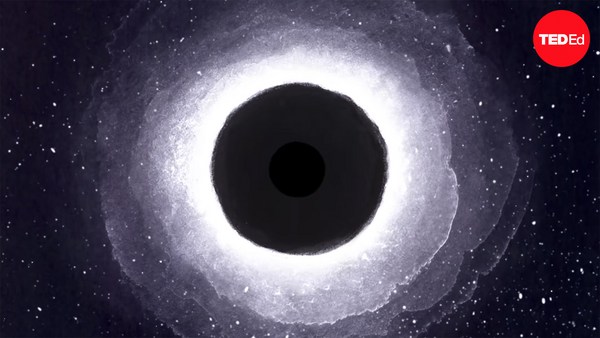Imagine a distant future when humans reach beyond our pale blue dot, forge cities on planets thousands of light-years away, and maintain a galactic web of trade and transport. What would it take for our civilization to make that leap? There are many things to consider— how would we communicate? What might a galactic government look like? And one of the most fundamental of all: where would we get enough energy to power that civilization— its industry, its terraforming operations, and its starships?
An astronomer named Nikolai Kardashev proposed a scale to quantify an evolving civilization’s increasing energy needs. In the first evolutionary stage, which we’re currently in, planet-based fuel sources like fossil fuels, solar panels and nuclear power plants are probably enough to settle other planets inside our own solar system, but not much beyond that. For a civilization on the third and final stage, expansion on a galactic scale would require about 100 billion times more energy than the full 385 yotta joules our sun releases every second. Barring a breakthrough in exotic physics, there’s only one energy source that could suffice: a supermassive black hole.
It’s counterintuitive to think of black holes as energy sources, but that’s exactly what they are, thanks to their accretion disks: circular, flat structures formed by matter falling into the event horizon.
Because of conservation of angular momentum, particles there don’t just plummet straight into the black hole. Instead, they slowly spiral. Due to the intense gravitational field of the black hole, these particles convert their potential energy to kinetic energy as they inch closer to the event horizon. Particle interactions allow for this kinetic energy to be radiated out into space at an astonishing matter-to-energy efficiency: 6% for non-rotating black holes, and up to 32% for rotating ones. This drastically outshines nuclear fission, currently the most efficient widely available mechanism to extract energy from mass. Fission converts just 0.08% of a Uranium atom into energy.
The key to harnessing this power may lie in a structure devised by physicist Freeman Dyson, known as the Dyson sphere. In the 1960s, Dyson proposed that an advanced planetary civilization could engineer an artificial sphere around their main star, capturing all of its radiated energy to satisfy their needs. A similar, though vastly more complicated design could theoretically be applied to black holes. In order to produce energy, black holes need to be continuously fed— so we wouldn’t want to fully cover it with a sphere. Even if we did, the plasma jets that shoot from the poles of many supermassive black holes would blow any structure in their way to smithereens.
So instead, we might design a sort of Dyson ring, made of massive, remotely controlled collectors. They’d swarm in an orbit around a black hole, perhaps on the plane of its accretion disk, but farther out. These devices could use mirror-like panels to transmit the collected energy to a powerplant, or a battery for storage. We’d need to ensure that these collectors are built at just the right radius: too close and they’d melt from the radiated energy. Too far, and they’d only collect a tiny fraction of the available energy and might be disrupted by stars orbiting the black hole. We would likely need several Earths worth of highly reflective material like hematite to construct the full system— plus a few more dismantled planets to make a legion of construction robots. Once built, the Dyson ring would be a technological masterpiece, powering a civilization spread across every arm of a galaxy.
This all may seem like wild speculation. But even now, in our current energy crisis, we’re confronted by the limited resources of our planet. New ways of sustainable energy production will always be needed, especially as humanity works towards the survival and technological progress of our species. Perhaps there’s already a civilization out there that has conquered these astronomical giants. We may even be able to tell by seeing the light from their black hole periodically dim as pieces of the Dyson ring pass between us and them. Or maybe these superstructures are fated to remain in the realm of theory. Only time— and our scientific ingenuity— will tell.


